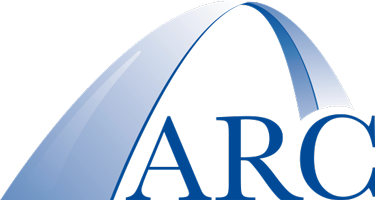The term ergonomics is derived from the Greek words ergon [work] and nomos [natural laws]. It is concerned with the “fit” between the user, equipment and their environments. Ergonomics at work takes account of the user’s capabilities and limitations in seeking to ensure that tasks, functions, information and the environment suit each user. Ergonomic design is the application of ergonomic knowledge to the design of the workplace (i.e., work tasks, equipment, environment) for safe and efficient use by workers. Good ergonomic design makes the most efficient use of worker capabilities while ensuring that job demands do not exceed those capabilities.
How can ergonomics in the workplace and human factors improve workers’ health and safety?
Practicing ergonomics at the workplace and considering human factors can:
- Reduce the potential for accidents, workers’ compensation and healthcare costs by reducing ergonomic risk factors;
- Improve performance and productivity with work environments that are designed to allow for good posture, less exertion, fewer motion and better heights and reaches;
- Improve work quality and morale by reducing the potential for fatigue and discomfort.
What is an ergonomics consultant?
An ergonomics consultant in Los Angeles and other areas, is one who helps companies by identifying ergonomic issues in the workplace and corrects those conditions or recommends changes to improve the client’s work environment or working conditions for the purpose of preventing injuries and improving the workers’ wellbeing and prevent injuries.
Ergonomist consultants participate in the design of systems to optimize overall system performance. A system is comprised of devices, tools, technologies, environments and/or organizational structures with which people interact to accomplish defined objectives. They also contribute to the design and evaluation of tasks, jobs, products, environments and systems in order to make them compatible with the needs, abilities and limitations of people.
Take a Break!
Did you know that frequent breaks could help lower the exposure to ergonomic injury risk?
The human body is always in movement while performing tasks. Even while seated, postural muscles are exerting tension to hold our upper body and head upright. Prolonged muscle exertion can cause fatigue, which may lead to an ergonomic injury.
Rest is a key component in preventing musculoskeletal injuries. Here are some ways you can take a break without disrupting your productivity:
- Move your printer somewhere that requires you to stand and walk to get your printout.
- Stand up while on the phone.
- Break up continuous computer time with checking phone messages, making phone calls to clients, etc.
- During your 10 to 15 minute and lunch breaks, get away from the desk and use the time to take a walk or other enjoyable activity.
Like other health care fields, the ergonomics consulting field has a variety of specialties, including:
- Ergonomics Safety Consultant
- Work Ergonomics Specialist
- Office Ergonomics Consultant
- Certified Ergonomics Assessment Specialist
- Certified Professional Ergonomist
Ergonomic consultants perform such ergonomic design services as:
- Industrial Ergonomic Design
- Office Ergonomics Design
- Ergonomic Workplace Assessment
- Ergonomic Workstation Assessment
- Ergonomics Training
What are ergonomic injuries?
Ergonomic injuries are injuries caused by ergonomic risk factors relating to high task repetition, performing job duties that cause the worker to assume repetitive/sustained awkward postures, unsafe/dangerous equipment and other factors that can result in workplace injuries. OSHA often uses the term Musculoskeletal Disorders (MSDs) to define ergonomic injuries. However, ergonomic injuries can also be defined as Repetitive Stress Injuries (RSIs), Repetitive Motion Injuries (RMIs), Cumulative Trauma Disorders (CTDs), or Cumulative Trauma Injuries (CTIs). Work related MSDs (including those of the neck, upper extremities and low back) are among the leading causes of lost workday injury and illness. According to the U.S. Bureau of Labor Statistics, work-related musculoskeletal injuries cost American businesses $15 to $20 billion each year in workers’ compensation costs alone.

Why is an ergonomic assessment important?
- An ergonomic assessment by a certified ergonomics assessment specialist will reduce injuries and illnesses, which affect insurance premiums, legal expenses, employee productivity, attendance, compensation and medical costs.
- Ergonomic assessments reduce stress and fatigue, resulting in greater efficiency and a better way of life for all employees.
- An ergonomics assessment by top ergonomics specialists in Los Angeles will assist in assuring regulatory compliance by providing employees with a safe and productive work environment, free from recognized hazards.
- A comprehensive ergonomic assessment benefits the worker by improving efficiencies and comfort while maximizing safety at a justifiable cost.
What does an ergonomic assessment from a certified ergonomics assessment specialist include?
Ergonomic assessments take many human factors into consideration, including:
- Job task and its demands on the worker (physically, mentally, emotionally)
- Equipment used (size, shape, weight, etc.) and appropriateness for the task
- Task-related information and how it is presented, accessed, used and changed
- Physical environment factors such as noise, temperature, humidity, vibration, lighting, etc.
- Culture and social environment factors such as team work, proximity of co-workers, management attitudes and support, etc.
- Worker physical aspects such as height, weight, fitness, strength, sensory acuity (i.e., vision, smell, hearing, touch) and potential for stress and strain on muscles, joints and nerves
- Psychological factors such as mental abilities, personality, knowledge, work experience
Once the assessment is completed, the certified ergonomics assessment specialist will either implement or help implement:
- On-site workplace ergonomics seminars for employees, supervisors and managers, ergonomic equipment recommendations and installations
- Ergonomics program development (designed to address the specific needs of the client company)
What is an ergonomic risk assessment?
The ergonomic risk assessment is an examination of the aspects of a task that may expose workers to an increased risk of injury. A hazard is something that has the potential to cause harm. Risk identifies the likelihood that the harm will be done and details the severity. The risk assessment determines if enough has been done to control the risk or if any further measures need to be taken to reduce the risk
What does an ergonomic design consultant do?
An ergonomic design consultant evaluates the workplace, the workspace and the tasks an employee must accomplish as part of an ergonomics assessment. After making these observations, the consultant with then apply their knowledge about human abilities, limitations, and other characteristics to make recommendations that are relevant to the design of tools, machines, systems, tasks, jobs and environments for safe, comfortable and effective human use.
What does an office ergonomics consultant do?
Office Ergonomics is the branch of ergonomics dealing specifically with the office environment. Office ergonomics consultants provide many services to help make the office environment healthy and safe for workers. Services include:
- In-depth analyses of the set-up and design of all workstation components, work tasks, and postures adopted, which are typically provided when an employee is working in discomfort, is returning to work from an injury, and/or has a requirement for a job accommodation.
- Generating an ergonomics evaluation report that provides recommendations to reduce any risk factors that may be contributing to the worker’s discomfort.
- Helping workers understand how to set-up and adjust their existing workstation components while also identifying areas of concern and opportunities for improvement to reduce discomfort and improve performance.
- Teaching workers basic office ergonomics, which can include teaching workers about office ergonomics hazards and teaching them proper work postures.
What does an ergonomic safety consultant do?
An ergonomic safety consultant plans and conducts projects and programs to ensure compliance with federal, state and local safety and health statutes and regulations. They conduct safety and health related investigations and provide consultative direction to managers and supervisors for actions and decisions. Additionally, ergonomic safety consults provide compliance based training and they recognize, monitor and make recommendations to ensure workplace safety hazards are corrected, through audits, ergonomic assessments and interventions.
What does a work ergonomics specialist do?
A work ergonomic specialist performs OSHA-compliant ergonomics analysis applicable in the industrial, healthcare, and office workplace to identify potential hazards that contribute to occurrences of musculoskeletal disorders. They also implement or assist with the implementation of cost-effective, high-impact solutions for workplace injury prevention.
Accredited Rehabilitation Consultants, Board Certified Professional Ergonomists, identify ergonomic risks and offers solutions to reduce these risk factors and eliminate ergonomic injuries. We conduct comprehensive worksite assessments, analyze ergonomic variables in disability case management in order to develop individualized high impact solutions and workspace improvements.
Our goal is to create a Culture of Safety and Responsibility for effective and sustainable health, wellness, safety, comfort, and production in the workplace. We take a four-phased approach with our ergonomic consulting evaluation services:
- Phase 1 – Ergonomic Assessment – assessment of known high-risk areas for the purpose of eliminating current/potential complaints
- Phase 2 – Ergonomic Evaluation – formulate and analyze workplace specific evaluations in order to make appropriate ergonomic recommendations.
- Phase 3 – Installation – all approved ergonomic equipment is purchased and installed.
- Phase 4 – Orientation & Training – Employee ergonomic training to assure employees have the necessary skills to achieve and maintain correct ergonomics to reduce the risk of workplace injuries.
Applied Rehabilitation Consultants also provides:
- Injury Prevention Education – Employee training on reducing and preventing workplace injuries.
- Expert Witness Services – Expert consultation, opinions, reports and testimony for litigation.
- Job Analysis – Independent (unbiased) modified and alternative position job analysis.
- Ergonomic Equipment – providing a variety of ergonomic furniture and accessories such as ergonomic chairs, articulating keyboard trays, lighting, monitor arms and more.
For more information about our services and ergonomic equipment, please call 323.930.6599.
Resource: http://www.asse.org/practicespecialties/ergonomics/
